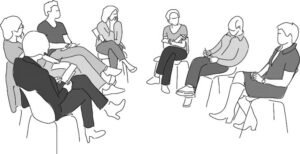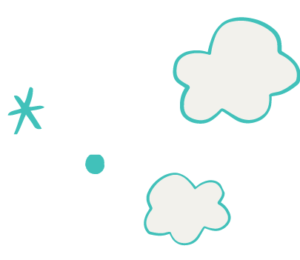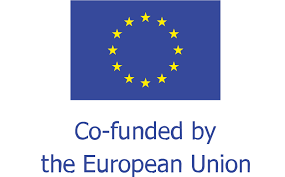A proactive circle is a conversation with several participants, led by a moderator. The circle is proactively deployed before there are any problems, in other words ‘in peacetime’ (Pros, 2016). This method is used to exchange ideas, discuss problems, work on executive functions (e.g. learn to wait for their turn, learn to express one’s emotions correctly, etc.), exchange opinions about class and school events/group atmosphere, make agreements make, etc. (Benedict Gate, nd). The participants sit in a circle with only chairs, where everyone has an equal position and receives equal attention and time. Because everyone can see each other and the conversation takes place according to a number of agreements, this benefits trust and safety (see step 4 in the Ladder of Cooperation) (Pros, 2016; BenedictusPoort, n.d.).

By regularly working with this methodology, people work on connectedness and a positive (class) atmosphere. In addition, everyone learns to listen carefully and respectfully to each other. They speak in a positive language, and because everyone is addressed, everyone gets the chance to say something about a certain topic (Pros, 2016).
To apply the proactive circles, a number of (basic) rules are used. It is up to the moderator of the conversation to explain and monitor this (De Bock, 2014; Degheldere , 2017; Pros, 2016; BenedictusPoort, n.d.):
- Always sit in a circle, preferably only with chairs;
- Make sure there are no or as few stimuli as possible (eg food, drink, music, etc.);
- The circle / circle symbolizes the equality of all participants. The person who introduces the topic and leads the conversation also sits in the circle.
The role of the moderator:
- Asks a question. If necessary: asks for additional clarity. The moderator intervenes if the rules are not respected, explains rules.
- Thanks everyone. Thank the person who spoke for his or her contribution. Choose whether you thank everyone together or do this individually. Make sure you don’t forget to thank anyone!
- Talking stick: You can choose to use a ‘talking stick’, so that it is clear who is talking.
- Everyone takes turns speaking. The word is given, not taken. He or she limits himself to the subject. Everyone is entitled to their own opinion: it is not about right or wrong but about own opinions, ideas, reflections.
- no feedback on feedback: The conversation is not a discussion. Only after completion and thanks can questions for clarification be asked (goal = create safety)
- When everyone else has had their turn, you can go back to that person to hear if he or she wants to add anything.
- What is said in the circle stays in the circle
- Outer circle: When someone has trouble keeping to the agreements, the moderator can ask him/her to sit in the outer circle. You can also choose this yourself. When someone is in the outer circle, that person no longer has any input into the circle. When the outer circle doesn’t work either, the person can go outside or be kicked out by the moderator
- One speaks from the ‘I’ person;
- Positive (body) language is used (no swear words, rolling the eyes, etc.)
Before the start of a proactive circle, one can use energizers and/or mixers. The use of energizers gives energy, increases concentration, can activate or just relax. When you use this when starting the proactive circle, this is a way to already connect in a playful way (eg standing-sitting). Mixers are used to ensure that the same people are not always placed next to each other (e.g. “Sit next to someone you don’t know very well”) (ProS, 2016).








